Your Guide To The Best Mobility Scooters That Fit In Your Car Boot
Living with restricted mobility doesn't mean your independence has to be limited, especially now ...
If you find driving or travelling as a passenger in a vehicle difficult or uncomfortable there are hundreds of innovative vehicle adaptations that can help to improve the quality of your journeys.
Everyone has their own individual requirements when it comes to vehicle adaptations. To try and keep it easy to understand, the adaptations industry splits their products into three categories: adaptations to help you drive, adaptations to help you stow a wheelchair or mobility scooter, and finally adaptations to help you get in and out of the vehicle.
Some adaptations may not be suitable for every type of vehicle, so it's important to think about the adaptations you may need - both now and in the future - if you're about to order a new vehicle.
There are around 100 adaptations installers located across the UK who can help you to choose and then professionally fit the adaptations you need. If you’ve never tried a particular adaptation before (or if you're not sure what's available that could help your condition) it may be worth booking an appointment at a Driving Mobility Centre for an independent assessment.
Searching for the right adaptations to help you drive or access a vehicle comfortably can be difficult, so here are many of the common adaptations that can be fitted by a local adaptation installation specialist near you.
Driving control adaptations can help make some of the basic areas of driving easier for disabled motorists, including speed control, signalling, and steering.

Adding a steering wheel ball to the steering wheel will allow you to steer the vehicle with one hand and operate all the other vehicle controls with the other. Steering wheel balls and pegs are inexpensive and popular adaptations that offer simple 360-degree steering control, and most versions can easily be clipped on and off any steering wheel.
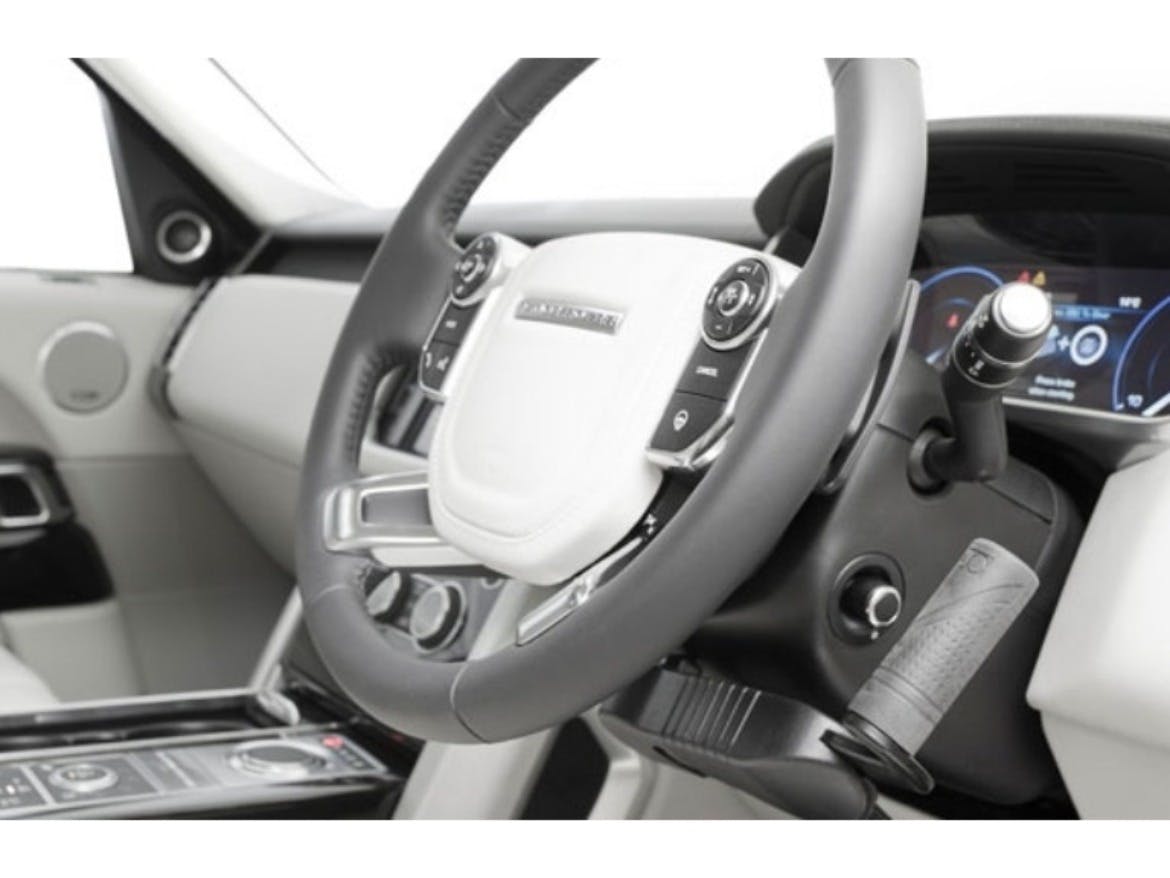
With a hand control adaptation, you can control the speed of the car with a manual push/pull device fitted next to the steering wheel. They are a great solution for people who have limited mobility in their lower body. When driving you simply push the lever down to brake and pull it up to accelerate. There are also electronic devices available that require less effort to use.
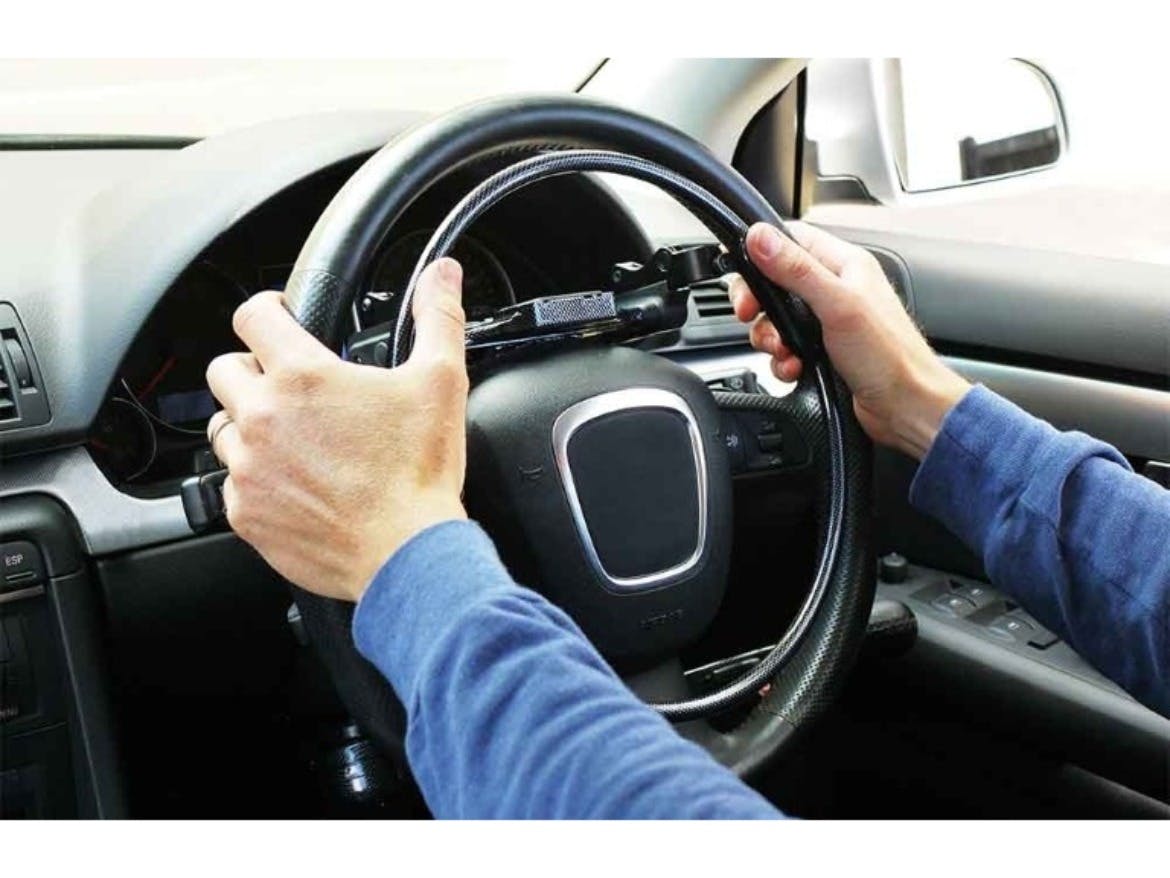
If you have limited mobility in your legs and perhaps find push/pull hand controls difficult to operate, an electronic accelerator could be the ideal solution. There are several types to choose from, including trigger accelerators, over ring accelerators and under ring accelerators. These accelerators electronically transfer the operation of the accelerator from the foot pedal to a specifically designed ring or trigger that offers smooth and gradual acceleration.
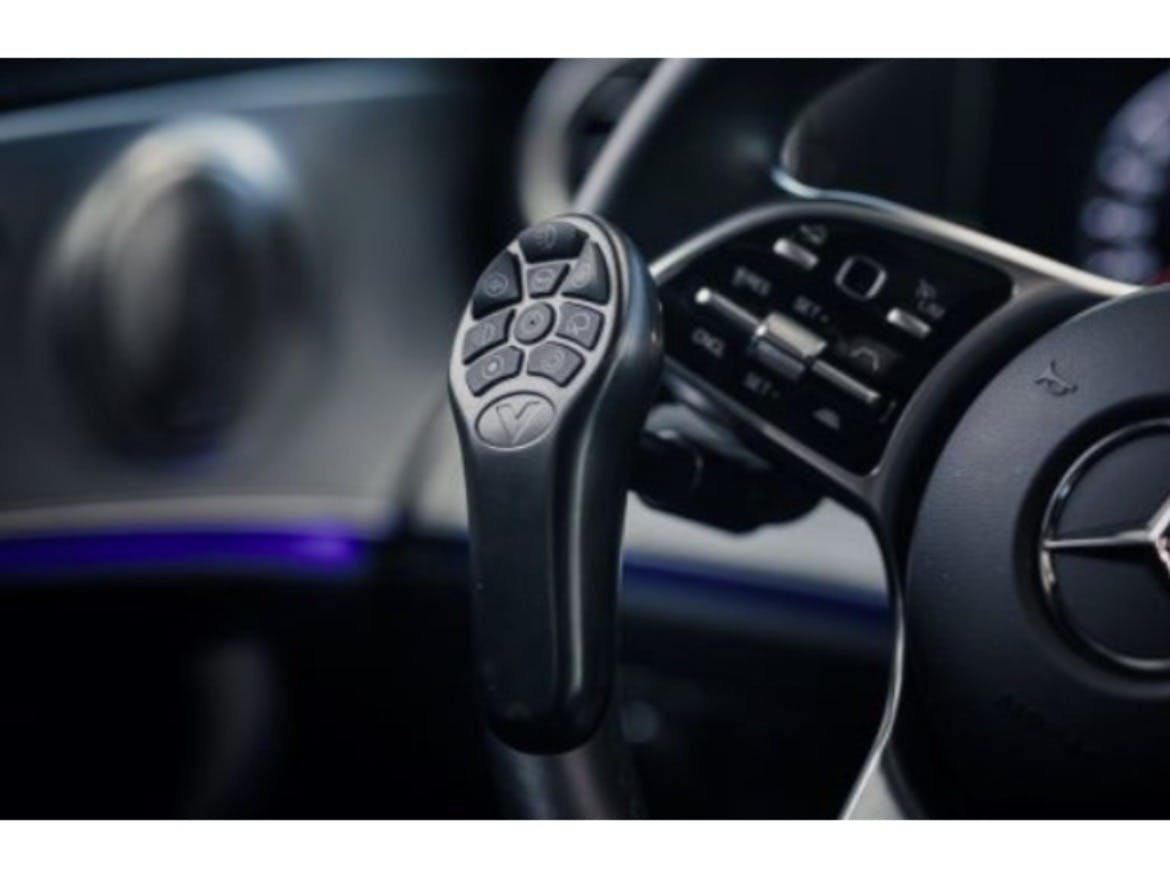
Specialist remote control devices make it easier to operate some of the standard car controls - such as the indicators, windscreen wipers and headlights - using a control panel that is mounted on or near the steering wheel. They can also include a steering wheel ball to help drivers with reduced arm mobility who want to steer and operate some of the key vehicle functions with just one hand.
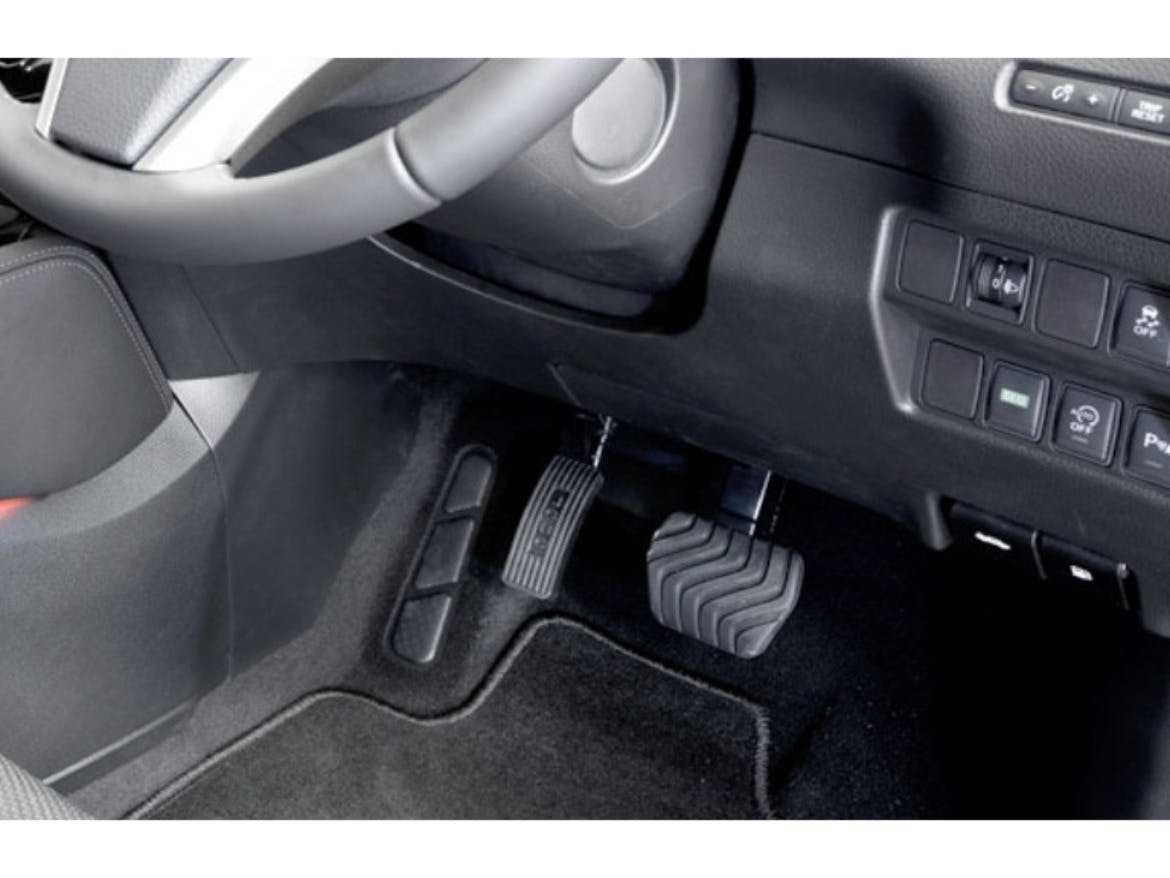
If you can't use your right leg comfortably or have a lack of mobility, you can add a left foot accelerator to the vehicle to control speed and braking with your left foot instead of your right. Mechanical and electronic versions are available, plus you can also add a quick release pedal guard that prevents accidental operation of the normal accelerator. Being able to quickly switch between systems is handy if you share the vehicle with a non-disabled driver.
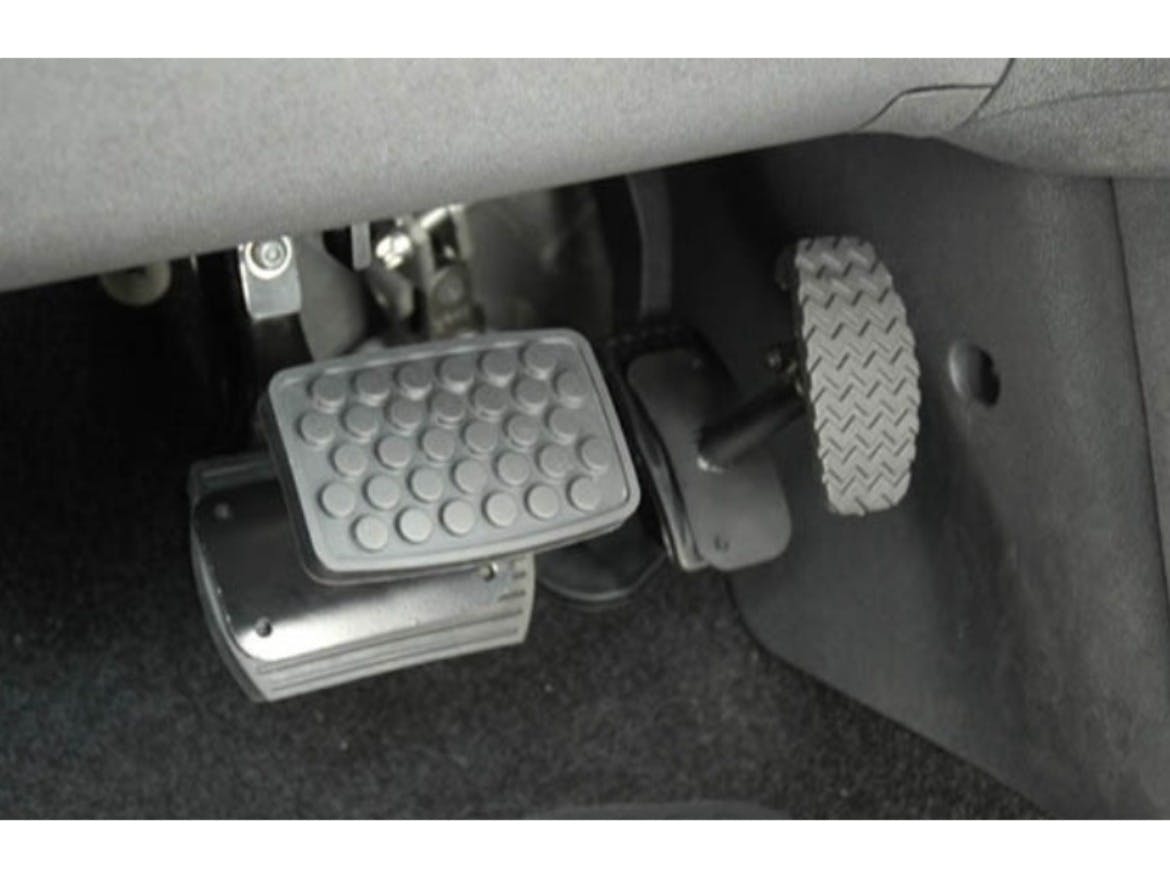
Ideal for anyone whose feet are unable to reach and safely operate the vehicle pedals, pedal extensions attach onto the existing pedals bringing them closer to the driver. Available for manual and automatic vehicles, they mean the driver can sit further back in their seat which makes driving far safer and much more comfortable. Pedal extensions can usually be removed in seconds, which is useful if you share the vehicle with a non-disabled driver.
Stowage adaptations can help drivers and passengers to lift a wheelchair, mobility scooter and other types of mobility equipment into a vehicle.
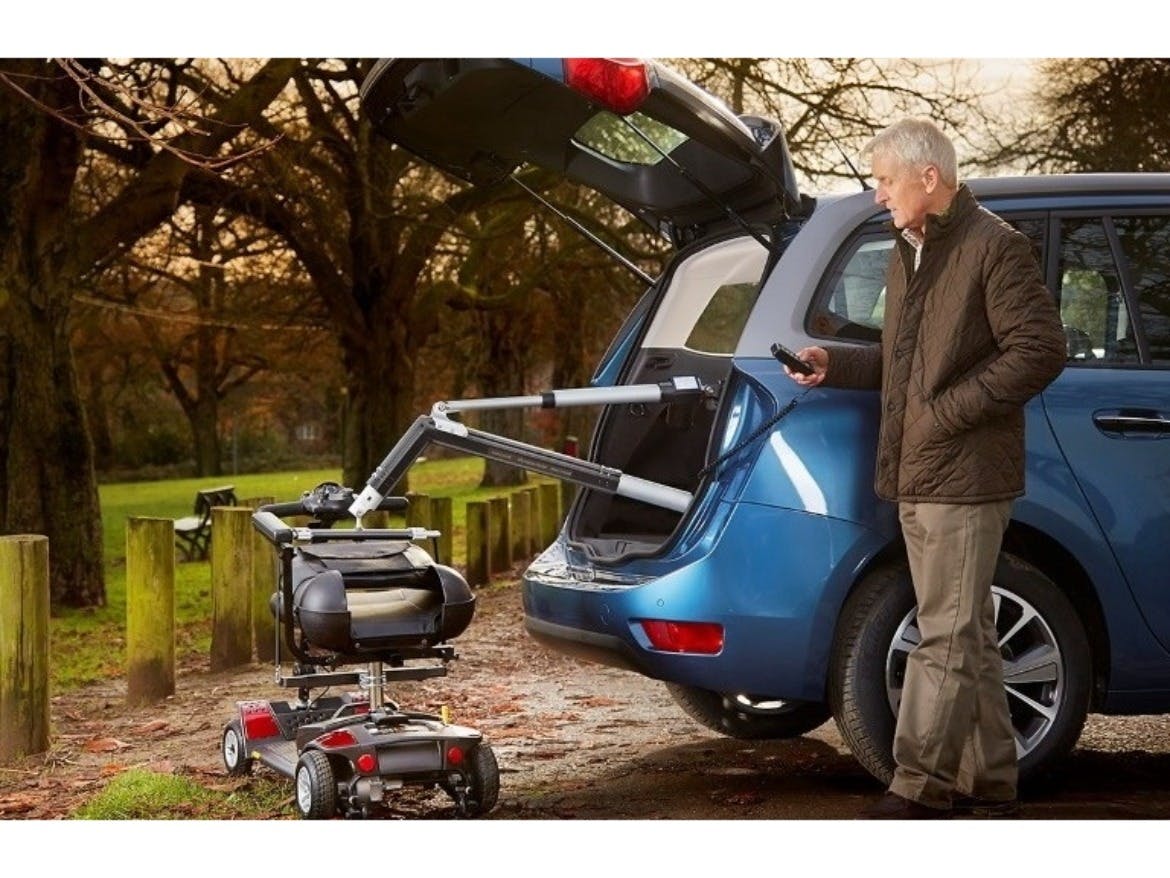
If you use a wheelchair or a mobility scooter a boot hoist is a great way of getting it into the car. Speak to an accredited adaptation partner to make sure you choose a vehicle that works well with a hoist that suits your equipment.
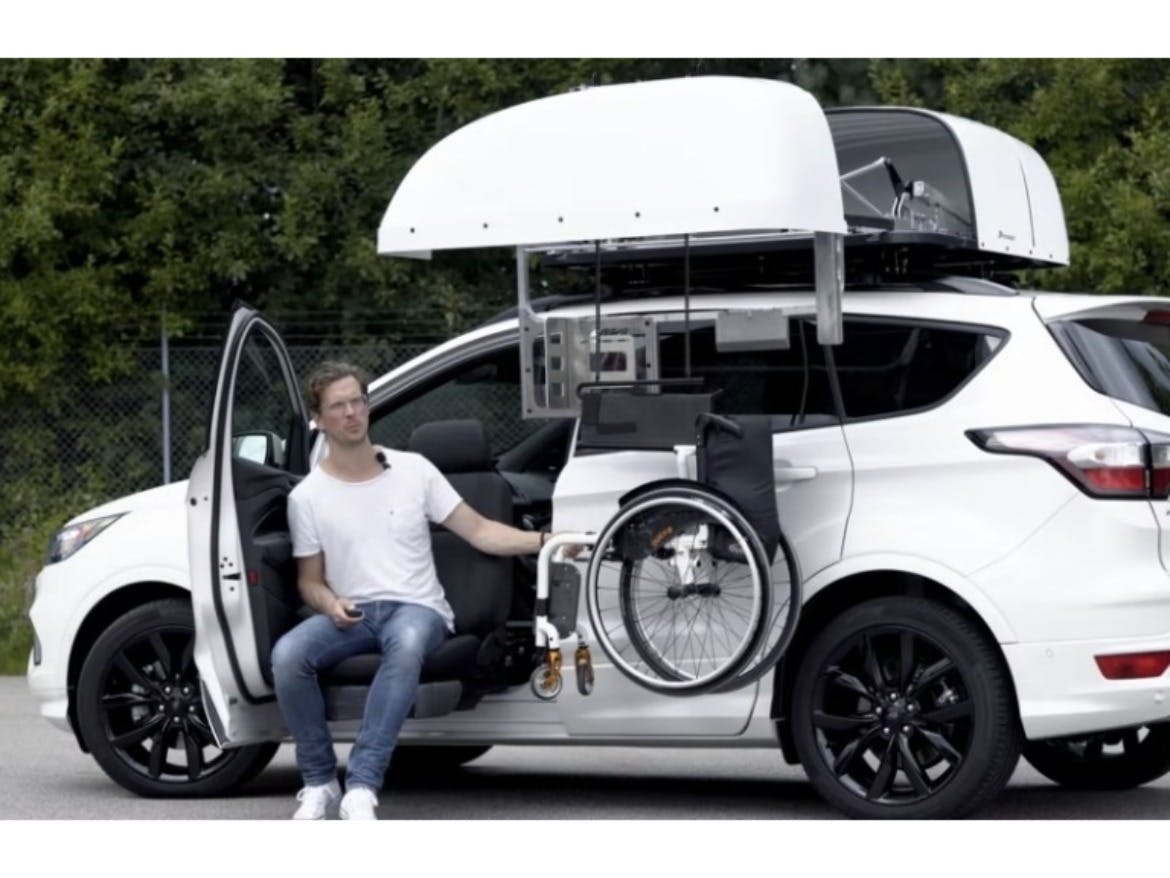
A roof mounted wheelchair stowage box is ideal if you need to transport a standard manual wheelchair and want to use your boot to transport other items. A rooftop box system can fold, lift and securely store a wheelchair in under 2 minutes.
Seating and access adaptations allow easier access to the vehicle for drivers and passengers, meaning you can travel in your preferred position with help from adaptations like transfer plates, person hoists and swivel chairs.
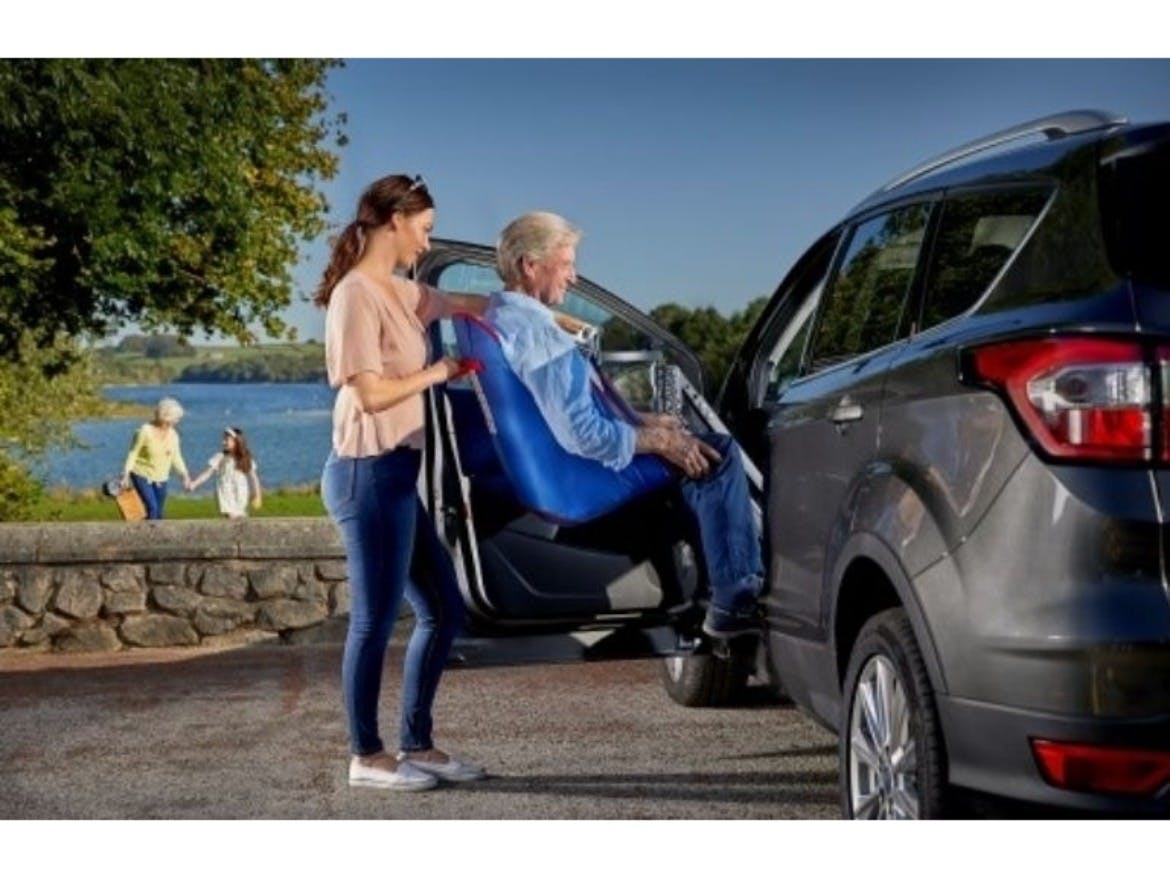
Operated at the touch of a button, an electric person hoist can lift a passenger safely into the vehicle on a sling. The disabled person sits in the sling and an electric motor raises them out of their wheelchair and into the front seat of the car, which makes these hoists a great alternative to a Wheelchair Accessible Vehicle (WAV).
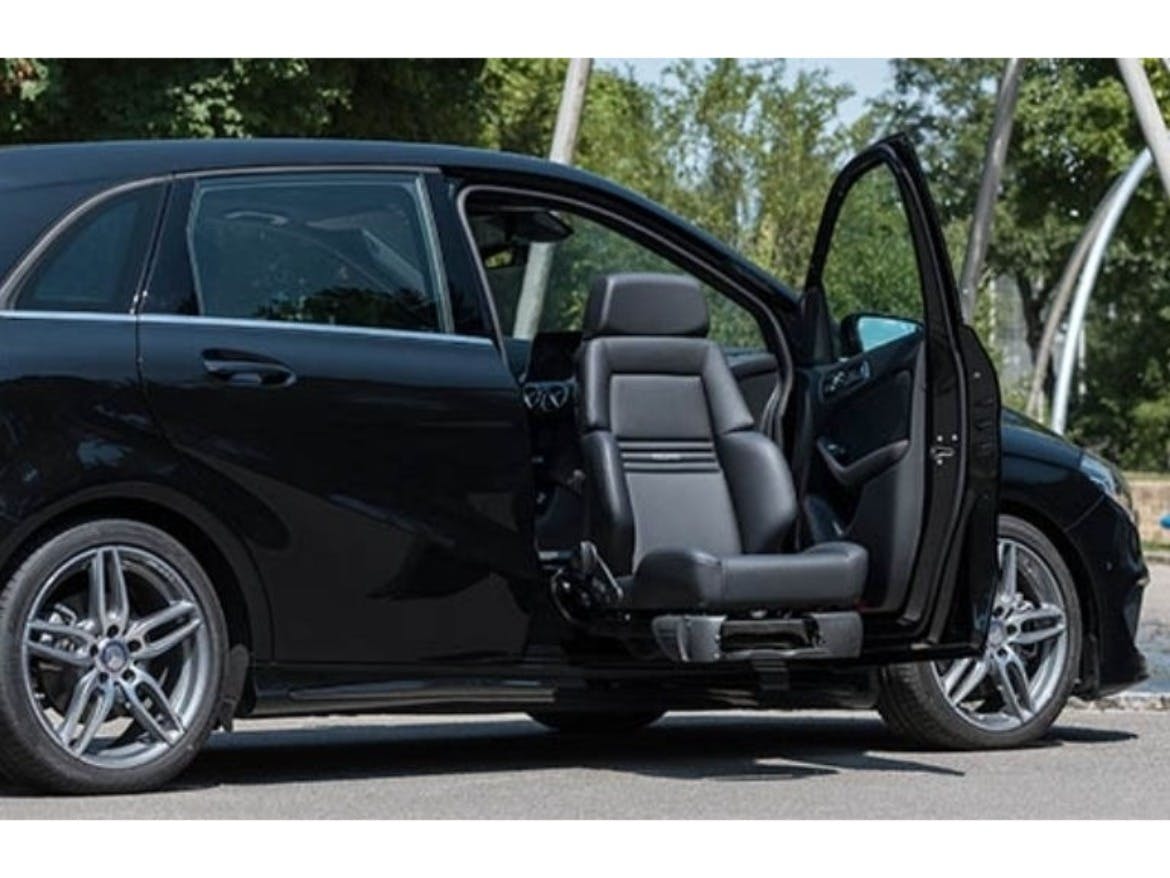
A swivel seat is a great option to help with accessing a vehicle when your mobility is restricted. Whether you use a wheelchair, a mobility scooter or simply find it difficult to get close enough to comfortably get into a vehicle, there are many types of swivel seats available that make getting in and out easier. They can be manual or motorised and fitted to either the passenger or driver side.
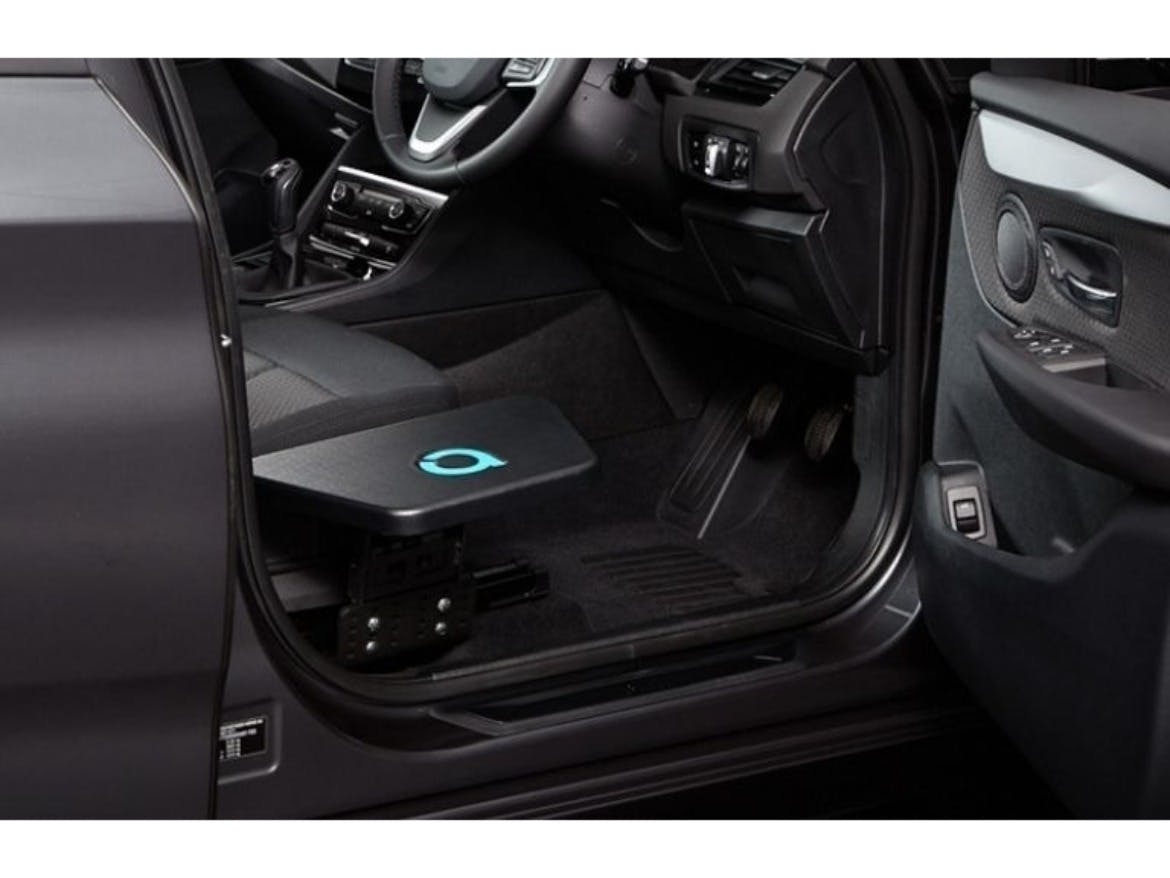
Designed to help people make a sideways transfer from a wheelchair or scooter to the drivers or a passenger seat, a transfer plate helps to bridge the gap to the car seat. A transfer plate can be used with almost any vehicle, and there’s a wide choice of models available including manually operated versions that fold away and powered versions that can be electronically moved up and down to the desired height of the user.
There are many other vehicle adaptations that can improve your driving or travelling experience. Your local adaptations installer is the best place to find expert advice about the vehicles adaptations that will be suitable for your individual needs.
Powered Tailgate (Boot) Opener - If you need help opening and closing the boot a fitted tailgate opener can easily open and close the boot via a remote control.
Boot Straps - A boot strap is a simple and low-cost adaptation that helps with closing the boot of your vehicle when it is too high to reach comfortably. The strap is fixed to the inside of the tailgate so that you can pull the boot down to a height where it's easier to close.
Grab Handles - These provide extra support when getting into and out of a vehicle. They can be installed on either side of the vehicle to help the driver or a passenger transfer more comfortably.
Lightened Power Steering - If you find the steering on your current vehicle too heavy, an adaptation specialist can adjust the steering to make it feel lighter and easier to turn the wheel.
Protective Screens - Travelling with passengers who have complex needs can sometimes put the driver at risk, but fitting a see-through protective screen between the front and rear seats means the driver can maintain contact with rear passengers while reducing the risk of physical interference.
Extended Seat Runners - Extended seat runners can help if you find bending your legs when getting into and out of a vehicle difficult. The seat runners are extended and re-positioning further back inside the car, which gives the driver or a passenger in the front seat more room to comfortably swing their legs into the foot well.
Vehicle Wheelchair And Scooter Ramps - Portable vehicle loading ramps can make loading a wheelchair or mobility scooter into the boot of a car easier. Lightweight and compact, they are ideal when used with an estate car and some MPVs, and for many people are a cost-effective alternative to a boot hoist or a Wheelchair Accessible Vehicle (WAV).
The type of device(s) you need obviously depends on the mobility issues you have. Here are some of the situations you may be experiencing together with the adaptations that could be installed by an adaptation firm to improve your driving and travelling experience.
| Mobility Problem | Possible Adaptation Solutions |
| Limited Mobility In Your Right Hand Side | Mechanical Hand Controls & Left Foot Accelerators |
| Restricted Strength In Your Upper Body | Steering Aids, Remote Control Devices, Easy Release Handbrakes & Electronic Accelerators |
| Limited Control Of Your Legs | Mechanical Hand Controls, Electronic Accelerators & Steering Aids |
| Wheelchair Or Mobility Scooter Is Too Heavy To Lift | Car Boot Hoists & Rooftop Hoists |
| Difficulty Transferring From A Wheelchair To The Car Seat | Swivel Seats, Person Hoists & Transfer Plates |
Many newer cars now come straight from the factory with helpful features like automatic transmission (standard on electric cars), push button start, electric and height-adjustable seats, automatic windscreen wipers, voice recognition, automated parking and parking cameras. These can also help to make driving, or travelling, easier and safer for people with mobility issues.
If you're a Motability Scheme customer, it's easy to choose the adaptations you need - often at no additional cost. If you (or someone you care for) are currently in receipt of a higher rate mobility allowance and you choose to exchange it to lease a Motability-supplied vehicle, adaptations can be fitted to your new vehicle for free or at a subsidised cost. Charitable grants are also available through the Motability Foundation to help with the cost of many of the more expensive and complex adaptations.
If your condition changes during the lease you can also contact the Motability team to discuss adding new adaptations to your vehicle mid contract.
If you're already a Motability customer and use an adaptation many stowage and access adaptations can be transferred from your old Motability vehicle to your new one before handover, with some transfers being completely free of charge. Where there is a transfer cost, it will be much lower than getting a completely new adaptation.
Unfortunately driving adaptations cannot be transferred from one vehicle to another.
Motability Scheme Adaptation Prices Download The Motability Adaptations Guide
Whether you're a Motability Scheme customer or not, your local adaptation installation firm is the best place find information about the price of each type of adaptation. They can also tell you which adaptations can be fitted to your particular make and model, the time it will take to fit the adaptation and, most importantly, the specific adaptations that should suit your individual needs.
If you are paying for adaptations on your own vehicle the cost of the adaptations should be zero-rated for VAT.
If you need further advice about an adaptation we recommend you arrange a visit to a Driving Mobility Assessment centre. A specialist will assess your needs and offer advice on adaptations, driving safely, practical ways to get in and out of a vehicle and give you the chance to go out on a test drive in an adapted car.
It’s important to understand that some adaptations can completely change how a vehicle is driven. This can often prove difficult for people who have previously driven with conventional controls, so help from an assessment centre could get you get back on the road faster if you want to return to driving following the recent diagnosis of a medical condition or an injury.
If you’re a potential new driver and want to know if it’s even going to be possible, an assessment would test your driving ability and give you professional advice on the adaptations needed to allow you to drive safely and comfortably.
These centres are run by independent occupational therapists and technical specialists who are there to help you to choose the right adaptations for your disability.
Living with restricted mobility doesn't mean your independence has to be limited, especially now ...
You need only think back a few years to realise how sophisticated standard car technology has bec...
Whether your mobility scooter is Class 2 or Class 3, it gives you freedom. We won’t be the first ...
Emily Nicole Roberts is a disability advocate and wheelchair user who uses her social media platf...
Upcoming regulations that will change how vehicles are made are set to cause huge disruption to m...
The Motability Scheme is a great way to enjoy the use of a car or a Wheelchair Accessible Vehicle...
Motability have updated their new car and Wheelchair Accessible Vehicle (WAV) Advance Payment pri...
If you've started shopping for a new Motability Scheme car and want to know which new models coul...